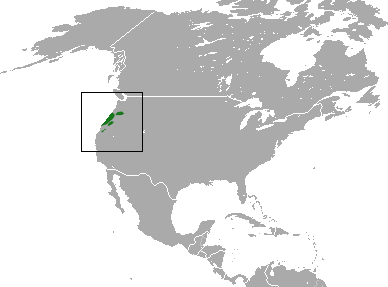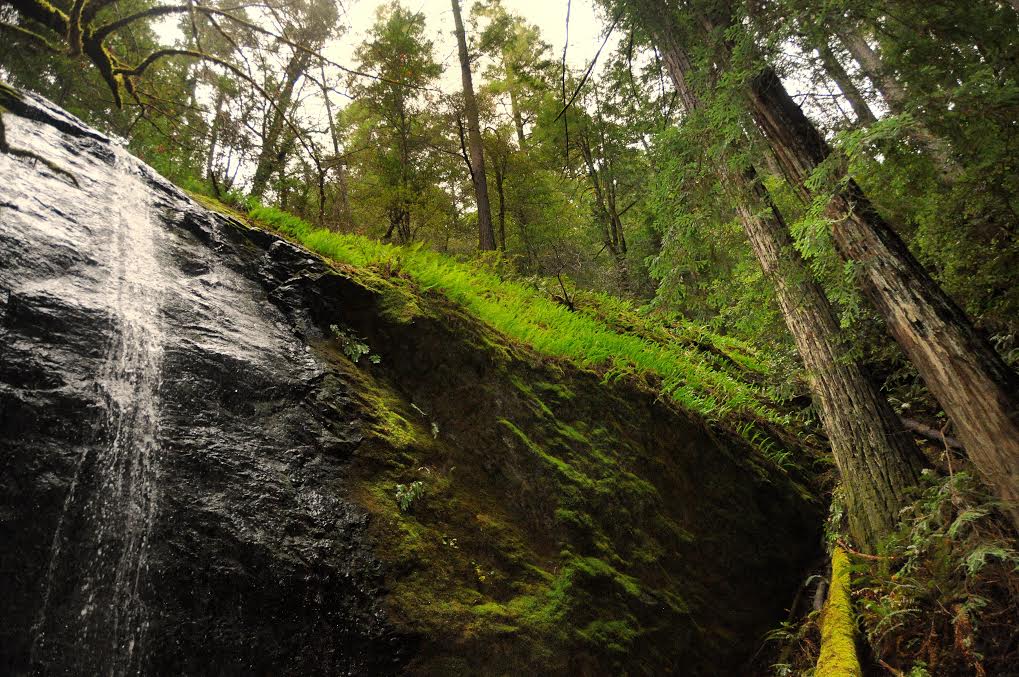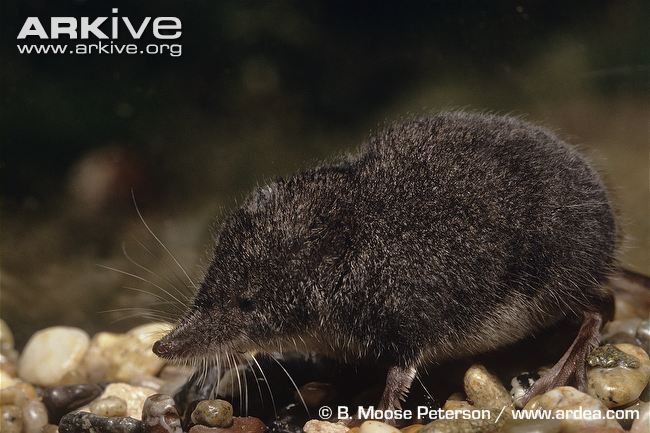Habitat and Geography
The Pacific shrew, as you may have guessed, is endemic to the
Pacific coast of the United States. Having a very specific
habitat, it is found along the coast of Oregon and into northern
California between 120° and 130° west, and surrounding 42° north
(Carraway 1985). The shrew’s habitat
stretches inland into Oregon, simply because this land is
supportive of its growth and reproductive success. Very few
other areas in the world, if any, provide the same resources as
this area of the United States for the Pacific shrew to thrive.
Sorex pacificus has a very limited geographic distribution
compared to most of its close relatives, such as Sorex vagrans,
which thrives in parts of Canada, Oregon, Washington,
California, Idaho, Nevada, Utah, and Wyoming (Gillihan and
Foresman 2013). 
One of the most common locations for studies on the
Pacific Shrew is the Jackson State Forest, located along the
coast of northern California. Nestled in a
protected forest along the coast, this area provides the perfect
location for the Pacific shrew to prosper. A damp environment is
preferred by the Pacific shrew, which entails a favored niche
consisting of decomposing matter on the forest floor, such as
logs, stumps, and areas of intense thicket coverage. Locations
with these characteristics include coastal, marine areas that do
not have extreme elevation changes. In
Oregon, the shrew can be found specifically in areas with alder,
salmonberry, and skunk cabbage. Contrastingly in California, it
is often located in compact
redwood
or spruce forests (Whitaker and Maser 1975). In this
way, deforestation and forest fires have immense implications on
the Pacific shrew. From the year 2000 to 2012, there were a
recorded 29 forest fires in California alone. While controlled
burns have their environmental benefits, wildfires have
irreversible devastating effects on organisms of all types
(State of California 2012). However, these effects are magnified
on organisms such as the Pacific shrew because it is relies so
heavily specifically on the Oregon/Northern California area.
When muddy marshes and moist ditches covered in brush or entire
forested areas are lost to natural disasters and human
interactions, the Pacific shrew loses its habitat and struggles
to survive and reproduce. Fortunately for the shrew, its habitat
is largely covered by protective areas such as Crater Lake
National Park, which holds environmental sustainability to the
utmost regard (NatureServe 2008).

As previously mentioned, the Pacific shrew prefers ground
cover in its habitat. However, when necessary, it will tunnel
considerably to avoid predation and find its main source of
food: insects. The shrew can also be seen preying upon slugs,
salamanders, snakes, snails, and other small invertebrates,
and rarely will feed upon seeds and other vegetation (Maser and
Hooven 1974). Because the Pacific shrew is a nocturnal mammal,
it is unique in that it does not have as much competition during
the nighttime finding food because the majority of mammals are
daytime hunters. Furthermore, the risk of being preyed upon is
greatly reduced simply because the number of active predators is
reduced during night hours. To learn more about the Pacific
shrew’s interactions with other organisms, visit our
interactions page.
To the Pacific shrew, having a nest is a vital aspect to
life. Without a nest, the shrew becomes very uneasy and erratic
in its movements (Maser and Hooven 1974). Seemingly, the shrew
can sense it is unsafe in the open environment during daytime
hours and will immediately burrow into substrate if a nest is
not available to provide protection, especially in the presence
of a possible predator. More information on the shrew’s unique
nesting habits can be found on the
form
and function page.
Go Home
Move on to Form and Function
